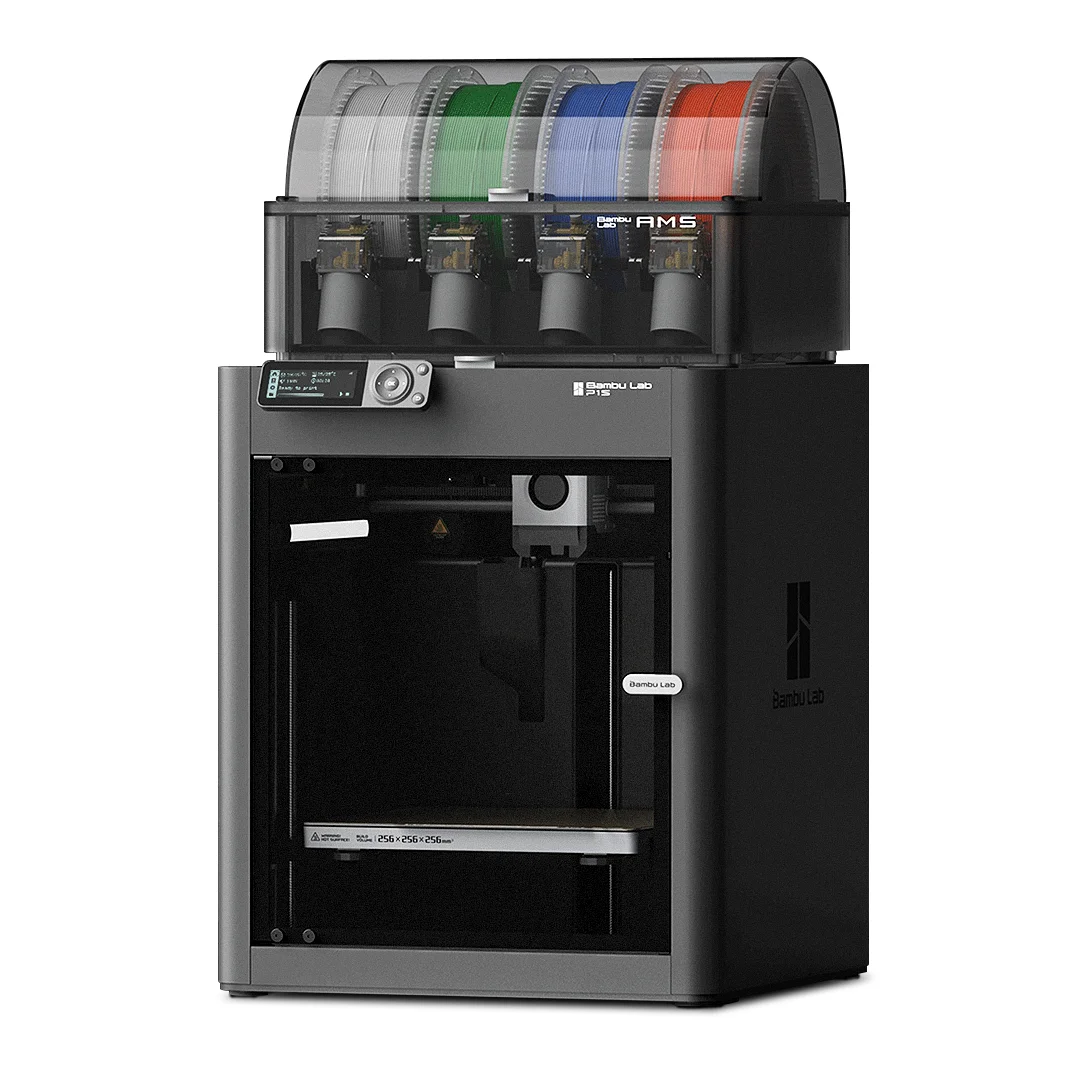Compare Ender 5 vs P1S
Comparison between the best 3D printers
Choose the best 3D printer at the best price. The cheapest 3D printers are here.
Buy a 3D printer here with 3D Fila.
 |
 |
|
| Model | Ender 5[BUY Ender 5] |
P1S[BUY P1S] |
| Printing Material | Filament | Filament |
| Buy Filament for Creality 3D Ender 5 | Buy Filament forBambu Lab P1S | |
| Estimated price | $399,00 | $949,00 |
| Manufacturer | Creality 3D | Bambu Lab |
| Release Year | 2020 | 2023 |
| Print Volume [mm] | 220x220x300 | 256x256x256 |
| Printer Size [mm] | 485x510x552 | 389x389x458 |
| Weight [kg] | 11,8 | 12,95 |
| Power Loss Recovery | YES | YES |
| Enclosed printer | NO | YES |
| Bed Leveling | Manual | Automatic |
| Filament End Sensor | NO | YES |
| Bed type | Heated | Heated |
| Power supply system | Bowden | Direct Drive |
| Standard nozzle | 0,4 | 0,4 |
| Maximum Nozzle Temperature [°C] | 255 | 300 |
| Maximum Bed Temperature [°C] | 100 | 100 |
| Maximum printing speed [mm/s] | 180 | 500 |
| Filament holder | YES | YES |
| Camera for supervision | NO | NO |
| Recommended filaments | PLA, TPU, ABS, PETG | PLA, PETG, TPU, PVA, PA, PA-CF, Nylon, PC |
| Recommended slicers | Cura, Simplify, Slic3r | Bambu Studio, Super Slicer, Cura, Prusa Slicer, Orca |
| Maximum Resolution [mm] | 0,1 | 0,1 |
| Processor | 32 bits | Quad ARM A7 1.2 GHz |
| Display | Mono | Touchscreen 5'' |
| Power Supply | 24V / 360W | 350 W |
| Connectivity | SD / USB | Wifi, Bambu bus, Cartão SD |
| Operating systems | Windows, Mac, Linux | Windows, Linux, Macbook |
| Date of registration in the system | 2021-04-15 | 2024-04-11 |
| Release date | 2020 | 2023 |
| Extra features | Crealitys Ender 5 stands out with a solid frame and a larger 220 x 220 x 300mm print volume. Its assembly is simple and quick, offering high print quality and speeds of up to 80mm/s. With a magnetic bed, it makes it easy to remove prints. Notable for being hackable and expandable, the Ender 5 continues Crealitys innovative tradition in the affordable 3D printer market. Equipped with a 350W/24V Meanwell power supply, it heats up quickly, in addition to having efficient cable management and modified Marlin firmware. Its unique design includes dedicated stepper motors for each axis and smooth movement on the Y axis, providing more consistent and detailed prints. | The Bambu Lab P1S stands out for its out-of-the-box practicality, eliminating the need for manual adjustments with automatic calibrations such as bed leveling and vibration compensation. It features multicolor printing capability through the AMS system, allowing up to 16 colors when connecting four AMS units. With an advanced control algorithm, the P1S offers fast printing speeds without sacrificing quality. Equipped with modern features such as filament end sensor, semi-automatic belt tension, direct extruder, welded frame and all-metal hotend, along with a fully enclosed chamber, the P1S promotes a superior printing experience, supporting a wide range of materials. |
| Support for multiple colors and materials (AMS and CFS) | NO | YES |
Notes * |
||
| Cost-benefit | 7 / 10 | 7 / 10 |
| Hardware | 1.5 / 10 | 5.6 / 10 |
| Tela | . | . |
| Print volume | 3 / 10 | 4 / 10 |
| Performance | 1 / 10 | 4 / 10 |
| [BUY Ender 5] | [BUY P1S] |
Conclusion |
| In comparing the Creality 3D Ender 5 and the Bambu Lab P1S, several key aspects highlight the strengths and weaknesses of each 3D printer, leading to distinct conclusions based on user needs and budget considerations. The Ender 5, positioned as an affordable option, offers a solid build and a reasonable print volume, making it a great entry-level choice for hobbyists or those just starting with 3D printing. Its manual bed leveling and general simplicity may appeal to users who appreciate a hands-on approach and the ability to tinker with their printer. While it supports a variety of filaments and maintains decent print speeds, the lack of advanced features, such as automatic calibration and support for multi-material printing, limits its versatility and ease of use compared to more modern options. Conversely, the Bambu Lab P1S showcases advanced technology and design improvements, offering features such as automatic bed leveling, a closed chamber, and the capability for multicolor printing through the AMS system. This printer is geared towards users who require higher performance, speed, and flexibility, making it suitable for more complex projects and professional use. Although it comes at a higher price point, its automated systems and extensive material compatibility can greatly enhance the overall printing experience, reducing the time spent on setup and adjustments. Ultimately, the choice between the Ender 5 and the P1S depends heavily on the user’s budget, experience level, and specific printing needs. For those seeking a cost-effective, reliable machine for basic printing tasks, the Ender 5 may be the best option. However, for serious hobbyists or professionals looking for high performance, efficiency, and versatility in their printing endeavors, the Bambu Lab P1S represents a worthwhile investment with a better cost-benefit ratio in terms of features and capabilities. |

